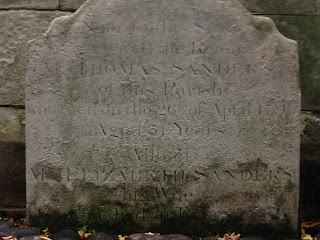Churchyard of St Anne's Church, Kew Green, London
Visited October 2015
The parish church of St Anne's sits right on Kew Green - three sides have park around them, with the fourth onto the road. It's a small churchyard, surrounded by a wall and raised from the surrounding Green. The church dates from 1714, and is built on land given by Queen Anne.
There are a few famous artists buried here - when I visited the tomb of Thomas Gainsborough was surrounded by a barrier so inaccessible. There are also graves of a number of people who were in service to the royal family at nearby Kew Palace, in particular those who served Prince Adolphus, Duke of Cambridge and his wife Princess Augusta in the first half of the 19th century. They were originally buried in the churchyard, but were reburied at Windsor Castle in 1930.

















































